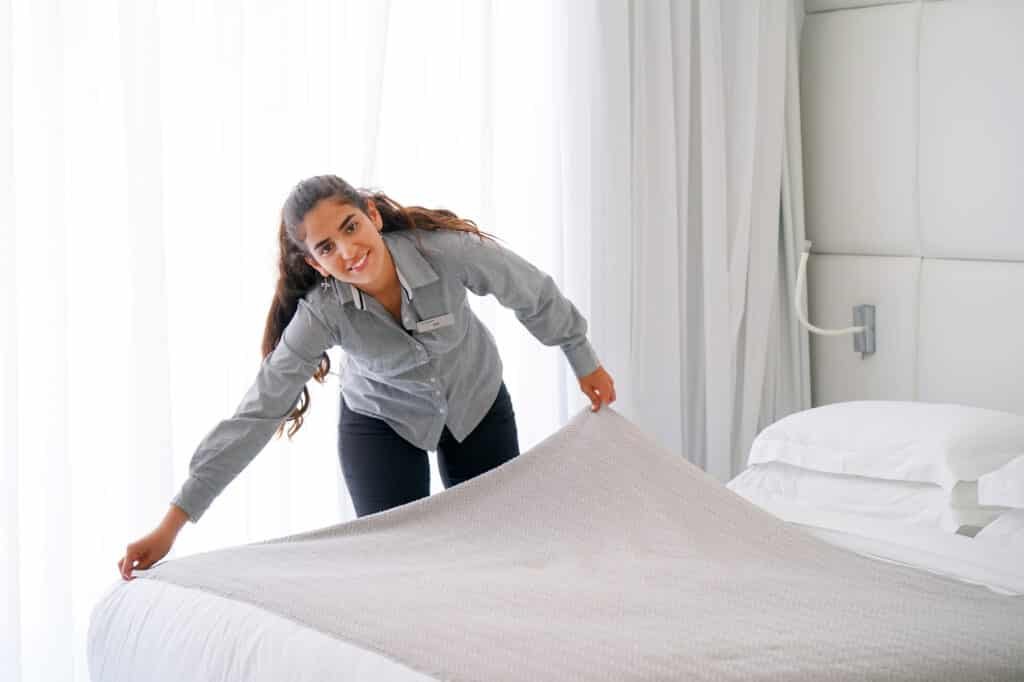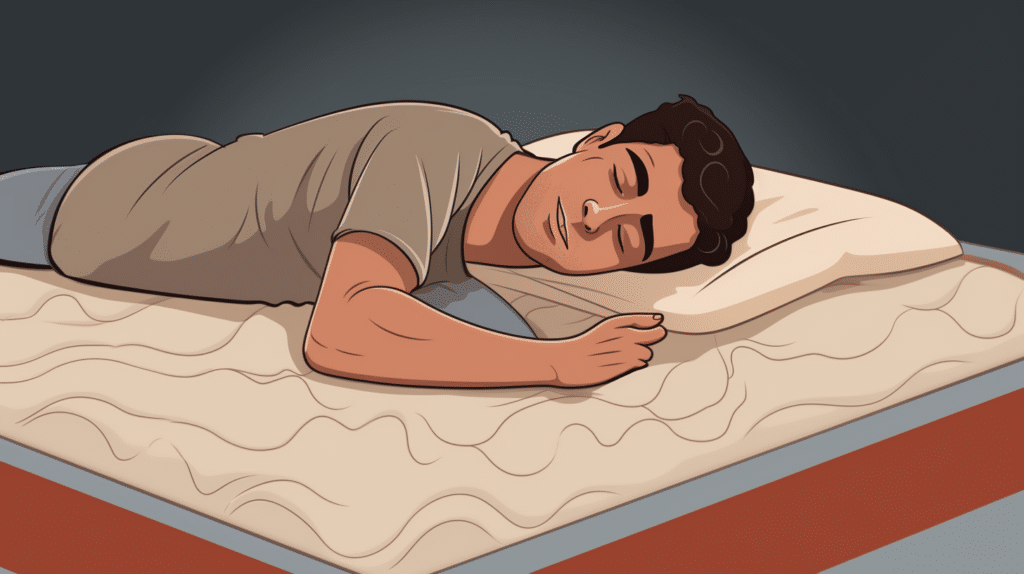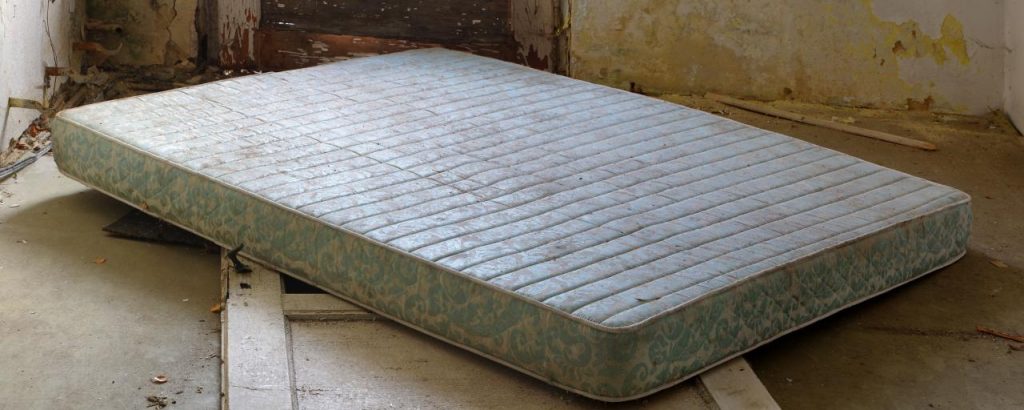Are you in need of a new mattress but feeling overwhelmed by the countless options available? Look no further! In this mattress buying guide, we will provide you with useful tips and insights to help you make an informed decision. A good quality mattress is essential for a restful sleep, and understanding its importance is the first step towards finding the perfect one for you.
When it comes to buying a mattress, it’s crucial to assess your sleep needs and preferences. Do you prefer a plush or firm sleeping surface? Are you someone who tends to sleep hot or cold? By considering these factors, you can narrow down your options and find a mattress that caters specifically to your requirements. Additionally, exploring different types and materials of mattresses is vital as each offers unique benefits. From memory foam to innerspring, latex to hybrid, there is something out there for everyone. So let’s dive into this comprehensive guide and discover how to choose the ideal mattress that will have you waking up refreshed and rejuvenated every morning.
Understanding the Importance of a Quality Mattress
You can’t underestimate the importance of a top-notch mattress, it’s the key to waking up refreshed and ready to conquer the day. The quality of your mattress directly affects the quality of your sleep, and a good night’s sleep has numerous benefits for your overall well-being. A high-quality mattress provides proper support to your body, ensuring that your spine is aligned correctly. This helps alleviate any back or neck pain you may have been experiencing due to an inadequate mattress. Additionally, a good mattress reduces pressure points on your body, allowing for better blood circulation and preventing tossing and turning throughout the night.
Not only does a good mattress improve physical health, but it also greatly impacts mental health. When you sleep on a comfortable and supportive surface, you’re more likely to enter deep sleep stages where rejuvenation occurs. This means you wake up feeling more refreshed and energized, ready to take on whatever challenges lie ahead. On the other hand, sleeping on an old or low-quality mattress can lead to restless nights and constant discomfort, resulting in grogginess and irritability during the day.
Investing in a high-quality mattress is investing in yourself. It may seem like an additional expense initially, but considering the importance of mattress quality and the benefits it brings to your overall well-being, it’s definitely worth every penny. So don’t skimp on something as vital as your sleep – prioritize finding a top-notch mattress that will provide optimal comfort and support for years to come.
Assessing Your Sleep Needs and Preferences

Understanding your sleep needs and preferences is crucial when it comes to finding the perfect mattress. As a couple, it’s essential to consider both of your individual requirements for a good night’s sleep. Do you prefer a firm or soft mattress? Are you sensitive to motion transfer? By discussing these factors together, you can narrow down your options and find a mattress that suits both of your needs.
Finding the perfect mattress for couples often involves compromising on certain aspects. For example, if one partner prefers a firmer mattress while the other likes it softer, you may need to find a middle ground that provides adequate support and comfort for both of you. Additionally, considering motion isolation is vital if one partner tends to move around during sleep, as this can disturb the other person’s rest.
Once you’ve found the ideal mattress, remember that regular maintenance is crucial for its longevity and performance. Proper care includes rotating the mattress every few months to ensure even wear and prevent sagging in specific areas. It’s also essential to keep your mattress clean by regularly vacuuming it and using a protective cover. By taking care of your investment, you can enjoy comfortable nights of restful sleep for years to come.
Exploring Different Mattress Types and Materials
When it comes to finding the perfect mattress for couples, exploring different types and materials can help you make an informed decision. One common consideration is whether to choose a memory foam or latex mattress. Memory foam mattresses are known for their ability to contour to your body’s shape and provide excellent pressure relief. They also absorb motion well, making them a good choice for couples who don’t want to disturb each other when they move during the night. On the other hand, latex mattresses offer more bounce and responsiveness compared to memory foam. They provide a slightly firmer feel and better airflow, which can be beneficial if you tend to sleep hot.
Another option worth considering is whether to go for an innerspring or hybrid mattress. Innerspring mattresses have been around for a long time and are known for their traditional feel with bouncy support provided by coils. If you prefer a more classic sleeping experience with strong edge support, an innerspring mattress might be your best bet. Hybrid mattresses combine both coils and foam layers to offer the benefits of both worlds – the support of coils and the comfort of foam. This combination often results in excellent motion isolation while still providing adequate support and pressure relief. By understanding the differences between memory foam vs. latex mattresses and innerspring vs. hybrid mattresses, you can narrow down your options and find the perfect match that suits both you and your partner’s preferences for a good night’s sleep together.
Determining the Right Size for Your Space
Deciding on the perfect mattress size can be a game-changer for your sleep sanctuary, creating a cozy haven that makes you feel like you’re floating on a cloud. When it comes to choosing the right mattress size, it’s essential to consider the dimensions of your space and how it will fit into your bedroom layout. Start by measuring your space accurately before making any decisions. Take into account the length, width, and height of your room, as well as any furniture or obstacles that may affect the placement of your mattress. This step is crucial in ensuring that you choose a size that fits comfortably without overwhelming the rest of your bedroom furniture.
Once you have measured your space, it’s time to decide on the appropriate mattress size for your needs. Consider factors such as whether you sleep alone or with a partner, if you have children or pets who may share the bed occasionally, and any specific preferences or requirements you may have. The most common sizes include Twin, Full/Double, Queen, King, and California King mattresses. Keep in mind that larger sizes provide more sleeping surface area but require more space in your room. It’s also important to remember that everyone has different comfort preferences and sleeping habits, so don’t hesitate to try out different sizes before making a final decision. By carefully considering these factors and measuring your space accurately, you can ensure that you choose the right mattress size for a comfortable and restful night’s sleep every night.
Considering Firmness and Support Levels
Finding the perfect firmness and support levels for your mattress can make all the difference in achieving a night of blissful, pain-free sleep. When it comes to firmness levels, everyone’s preference may vary. Some people prefer a soft mattress that allows them to sink into plush comfort, while others prefer a firmer surface that provides more support. It’s important to consider your own body type and sleeping position when determining the ideal firmness level for you. If you’re a side sleeper, you may benefit from a softer mattress that contours to your body’s curves and relieves pressure points. On the other hand, if you’re a back or stomach sleeper, a firmer mattress can help keep your spine properly aligned and prevent any sagging.
In addition to firmness levels, support levels are equally important when choosing a mattress. Support refers to how well the mattress keeps your spine aligned and distributes your weight evenly across its surface. A good level of support is essential for preventing back pain and ensuring proper spinal alignment throughout the night. To determine the right support level for you, consider factors such as your weight, body shape, and any specific areas of concern like lower back pain or joint issues. Keep in mind that mattresses with too much give can result in sinking or sagging, while those with too little give can create uncomfortable pressure points. Finding the balance between firmness and support will ultimately lead to better sleep quality and overall comfort throughout the night.
Evaluating Cooling and Breathability Features
Now that you’ve considered the firmness and support levels of your potential mattress, it’s time to shift your attention to evaluating its cooling and breathability features. After all, a cool and breathable mattress can greatly enhance your sleeping experience.
When it comes to cooling technologies, there are several options available in the market today. Some mattresses are designed with gel-infused foam or memory foam with open-cell construction, which helps dissipate heat and regulate temperature throughout the night. Others may incorporate phase-change materials that actively absorb and release heat as needed, keeping you at an optimal sleeping temperature. These innovative cooling technologies can be particularly beneficial for those who tend to sleep hot or live in warmer climates.
In addition to cooling technologies, it’s also crucial to consider the breathability of a mattress. Look for mattresses made from breathable materials such as natural latex or organic cotton covers that allow air to circulate freely. This not only helps prevent heat buildup but also promotes better airflow, reducing any potential moisture build-up that could lead to mold or mildew growth over time. By choosing a mattress with excellent cooling and breathability features, you can ensure a comfortable and refreshing night’s sleep every time you lay down on your bed. So take the time to evaluate these aspects when making your final decision.
Examining Motion Isolation and Noise Reduction

Consider how well the mattress isolates motion and reduces noise, as this can greatly impact your sleep quality and overall comfort. Motion isolation refers to the ability of a mattress to absorb movement so that it doesn’t transfer across the bed. This is particularly important if you share your bed with a partner who tends to toss and turn throughout the night. A mattress with good motion isolation benefits ensures that their movements won’t disturb your sleep, allowing you both to enjoy uninterrupted rest. Look for mattresses that use materials such as memory foam or latex, as these tend to have better motion isolation properties compared to traditional innerspring mattresses.
In addition to motion isolation, noise reduction techniques are also worth considering when purchasing a mattress. Noisy mattresses can be quite disruptive, especially if you or your partner are light sleepers. To minimize noise, look for mattresses that have individually wrapped coils or pocketed springs instead of interconnected ones which can produce squeaking sounds when compressed. Additionally, foam-based mattresses generally tend to be quieter than spring-based ones due to their lack of moving parts. By choosing a mattress with effective noise reduction features, you can create a peaceful sleeping environment where any sounds from the bed won’t disturb your restful night’s sleep.
Comparing Prices and Budgeting for Your Mattress
When comparing prices and budgeting for your new bed, it’s crucial to take into account not only the initial cost but also the long-term value and durability of the mattress. Comparing brands is an essential step in finding the best deal. Different brands offer varying levels of quality and features, so it’s important to research and read reviews to determine which ones are reliable and reputable. Keep in mind that a higher price doesn’t always guarantee better quality, so don’t be swayed by expensive options without considering their value.
Understanding mattress warranties is another factor to consider when comparing prices. A warranty can provide peace of mind knowing that you’re protected against any defects or issues with your mattress. Pay attention to the length of the warranty and what it covers. Some warranties may only cover manufacturing defects while others may include sagging or other wear over time. It’s also important to understand any conditions or requirements for maintaining the warranty validity, such as using a specific type of bed frame or keeping tags intact. Taking all these factors into consideration will help you make an informed decision when comparing prices and budgeting for your new mattress, ensuring that you get both a good deal upfront and long-lasting value from your investment.
Reading Customer Reviews and Seeking Recommendations
Looking for the perfect bed? Check out what other customers have to say and get recommendations from those who have already found their dream mattress. Reading customer reviews is a great way to gauge the satisfaction levels of previous buyers. By hearing about their experiences, you can get valuable insights into the quality and comfort of different mattresses. Take note of any recurring themes or issues that customers mention, as this can help you identify potential problems or benefits that may be important to you.
In addition to reading customer reviews, seeking recommendations from friends, family, and colleagues can also be helpful in your mattress buying journey. Word-of-mouth referrals are often trusted sources because they come from people you know and trust. They can provide personal insights into various brands and models based on their own experiences. Pay attention not only to individual preferences but also consider brand reputation. If a particular brand consistently receives positive feedback and has a strong reputation for quality mattresses, it may be worth considering when making your final decision.
Testing and Trying Out Mattresses In-Store or Online

If you’re ready to find your perfect bed, why not take the opportunity to test and try out different mattresses in-store or online? When it comes to testing options, both in-store and online shopping have their advantages. In-store, you have the benefit of physically trying out various mattresses by lying down on them and assessing their comfort level. You can feel the firmness, support, and overall feel of each mattress firsthand. Additionally, being in a store allows you to ask questions and receive guidance from knowledgeable salespeople who can help steer you towards the right mattress for your needs.
On the other hand, online mattress shopping offers convenience and a wider range of options. Many online retailers offer generous trial periods where you can sleep on the mattress for several nights or even weeks before making a final decision. This allows you to truly gauge whether a particular mattress is comfortable for you over an extended period of time. Online reviews are also helpful in providing insights from other customers who have already tested the mattresses themselves. Moreover, purchasing a mattress online often comes with free delivery straight to your doorstep, eliminating the hassle of transporting it yourself.
Ultimately, deciding between testing mattresses in-store or online will depend on your personal preferences and circumstances. If possible, taking advantage of both options may provide you with a more comprehensive understanding of what type of mattress suits your needs best. Whether through physical testing at a store or sleeping on it during an extended trial period at home after ordering online – finding that perfect bed is worth investing time and effort into exploring all available avenues.
Conclusion
In conclusion, purchasing a mattress is no small decision. It requires careful consideration of your sleep needs and preferences, as well as an understanding of the different types and materials available. By determining the right size for your space and considering factors such as firmness and support levels, you can ensure that you find a mattress that suits your individual requirements.
Additionally, it’s essential to take into account motion isolation and noise reduction if you share your bed with a partner or have a tendency to move around during sleep. Comparing prices and budgeting for your mattress will help you stay within your means while still finding a high-quality product. Lastly, don’t underestimate the power of customer reviews and recommendations in guiding your decision-making process.
Remember, it’s always recommended to test and try out mattresses either in-store or through virtual trials before making a final purchase. This allows you to experience firsthand how the mattress feels and whether it provides the comfort and support you need for a good night’s sleep. So take the time to research, compare options, seek advice from others, and make an informed choice that will ultimately contribute to better sleep quality for years to come.



Lindsey my son has a beautiful antique sleigh bed but he measured for a mattress and his measurements are 64 wide 74 long please tell me what size mattress to buy for this beautiful bed please.
Hi Debbie,
This could be tricky. The closest size to this that I can think of is an RV Short Queen which is 60×74, so still not quite an exact fit unfortunately.
I’ve been wanting to find the perfect mattress, and I think that being able to look for some cheap options would be ideal right now. I’m glad you talked about being able to watch out for memory foam allergies, which I think is very helpful. I’m going to have to see if I can try a few different kinds of mattresses, and see what we can find!